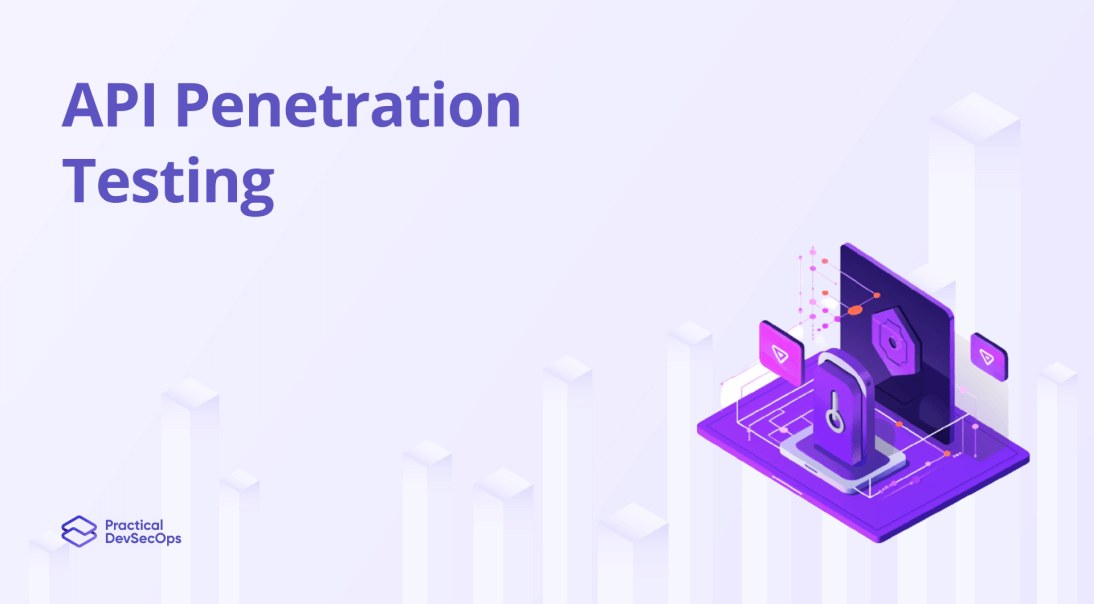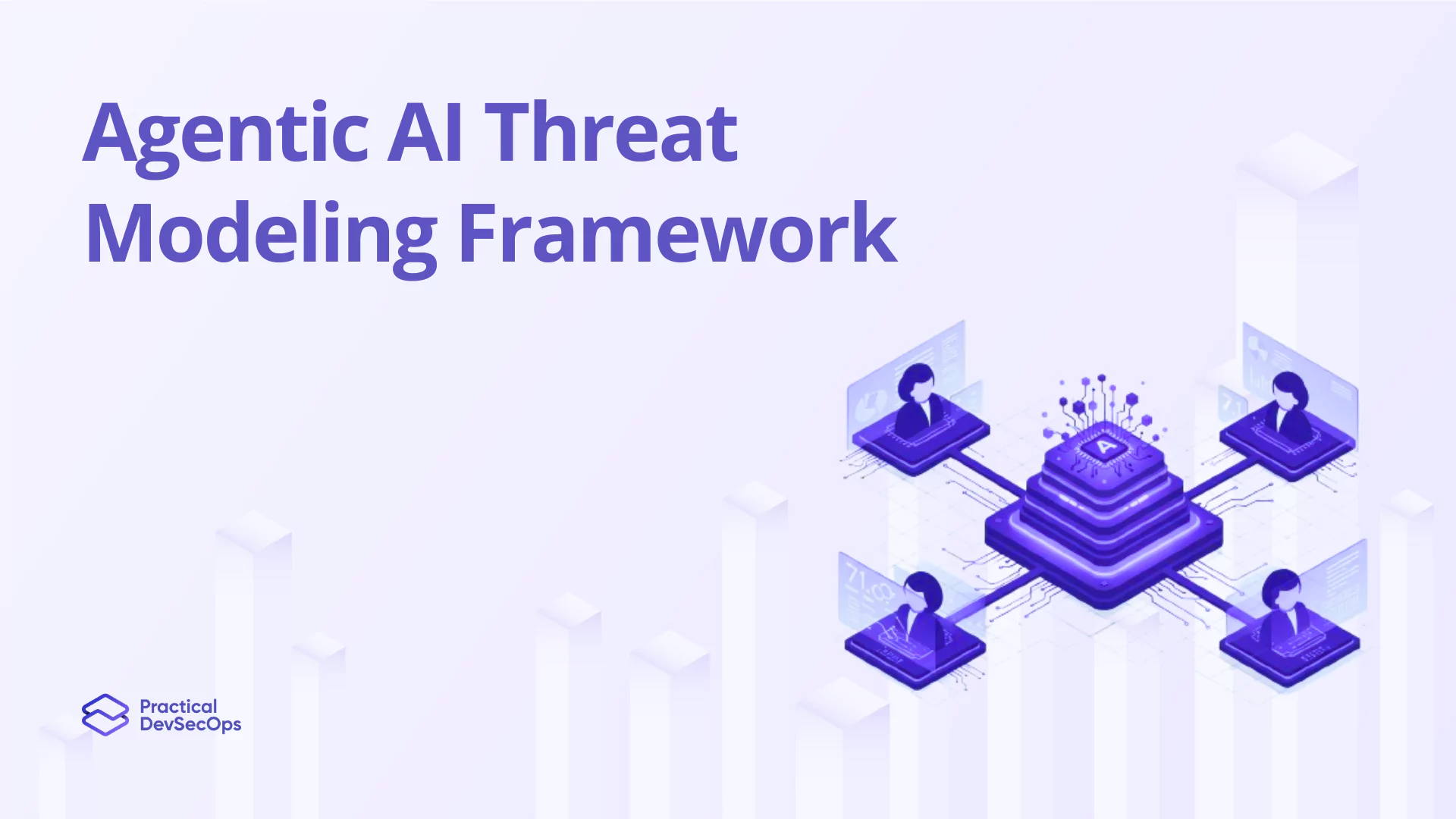APIs (Application Programming Interfaces) play a vital role in enabling communication and integration between systems, applications, and services. However, with the increasing reliance on APIs, the need to ensure their security also becomes crucial. API penetration testing, also known as API pentesting, is a process that helps organizations identify and mitigate vulnerabilities in their APIs to protect against potential attacks. In this article, we will delve into the concept of API penetration testing.
What is API Penetration Testing?
API penetration testing is the process of assessing the security posture of an application’s APIs. By simulating real-world attacks, security geeks can uncover vulnerabilities and weaknesses that malicious hackers might exploit. Just like wearing a veteran hacker’s hat, you’ll scrutinize the API endpoints, authentication mechanisms, input validation, and more to ensure they’re robust enough to withstand potential attacks.
Why is API Pentesting Important?
APIs can act as entry points for attackers, exploiting vulnerabilities to gain unauthorized access, manipulate data, or disrupt services. API pentesting is crucial for several reasons:
- Ensuring Robust Security: API pentesting identifies and mitigates potential vulnerabilities, reducing the risk of exploitation and data breaches.
- Preserving Data Integrity: By testing how an API handles user input and interactions, API pentesting ensures that data integrity is maintained throughout the communication process.
- Strengthening Trust: Regular API pentesting instills confidence in users, demonstrating an organization’s commitment to security and protecting sensitive data.
- Compliance with Regulations: Many industries, such as finance, healthcare, or government sectors, have stringent compliance requirements. API pentesting helps organizations meet these requirements and maintain industry standards.
| API Pentesting Benefits | Description |
| Find Vulnerabilities | Detects hidden flaws before hackers do |
| Data Protection | Safeguards sensitive information |
| Regulatory Compliance | Meets industry standards and avoids fines |
| Stronger Security | Ensures robust defenses against new and evolving threats |
| Business Continuity | Prevents disruptions and builds customer trust |
| Real-World Readiness | Tests APIs like a real attacker would, ensuring practical security |
API Pentesting Process
To conduct an effective API pentest, the following steps are typically involved:
- Scoping: Define the scope of the pentest, including the specific APIs to be tested, their functionalities, and the intended goals of the assessment.
- Reconnaissance: Gather information about the API, including documentation, endpoints, input parameters, and potential entry points for attackers.
- Vulnerability Assessment: Scan the API for known vulnerabilities using automated tools or manual techniques. Look for potential security weaknesses that could be exploited.
- Exploitation: Attempt to exploit identified vulnerabilities, simulating attacks that attackers might launch. This helps validate the seriousness of vulnerabilities and their potential impact.
- Reporting: Document the findings, including a detailed description of vulnerabilities, their potential impact, and recommended remediation measures. This report is essential for developers and stakeholders to understand and prioritize security enhancements.
API Penetration Testing Checklist
As the use of APIs (Application Programming Interfaces) continues to increase, ensuring their security becomes paramount. API pentesting, or API penetration testing, is an essential process to assess the security of an API by simulating attacks and identifying vulnerabilities. Before embarking on an API penetration testing expedition, arm yourself with this API pentesting checklist:
Understand the API:
Gain a solid understanding of the API’s functionality, endpoints, and intended usage. Analyze the API documentation to identify potential attack vectors.
Identify the Attack Surface:
Determine the entry points, such as endpoints, headers, or input parameters, through which an attacker could exploit the API.
Perform Vulnerability Assessment:
Scan for common API vulnerabilities, such as injection attacks, broken authentication, insecure direct object references, and XML external entity (XXE) attacks.
Enumerate and Test Endpoints:
Enumerate all available API endpoints and test them for security vulnerabilities, including unauthorized access, injection flaws, or sensitive data exposure.
Test Authentication and Authorization:
Assess the effectiveness of authentication mechanisms, such as API keys, OAuth tokens, or JSON Web Tokens (JWT), and ensure proper authorization levels are enforced.
Test Input Validation:
Check how the API handles user input and test for potential input validation vulnerabilities, like SQL injections or cross-site scripting (XSS) attacks.
Download Free E-book on API Security
Test for Security Misconfigurations:
Uncover misconfigurations that could lead to security breaches, such as exposed sensitive information or insecure server configurations.
Also Read, Guide to API Security Management
Check for Rate Limiting and Brute Force Protections:
Determine if proper rate limiting and brute force protection mechanisms are in place to prevent abuse and unauthorized access.
Test for Data Integrity:
Verify that data transmitted over the API is properly protected with encryption, and check for vulnerabilities like man-in-the-middle attacks.
Perform Error Handling Testing:
Test how the API handles errors and exceptions, ensuring that they don’t reveal sensitive information or provide clues for further exploitation.
Document Findings and Remediation:
Document all identified vulnerabilities, their potential impact, and provide recommendations for remediation.
Also Read, API Security Testing Checklist
How API Penetration Testing can be integrated into Continuous Integration/Continuous Deployment workflows?
Integrating API penetration testing into Continuous Integration/Continuous Deployment (CI/CD) workflows helps teams find and fix security issues early, making releases safer and faster. Here’s how it works and why it’s valuable:
- Automated Security Testing in the Pipeline
API security tests can be set up to run automatically with every code change, pull request, or deployment. This means vulnerabilities are detected as soon as they are introduced, not after the product is live. Tools and plugins can be added to your CI/CD pipeline to scan API definitions (like OpenAPI files) and run security audits. If a vulnerability is found, the build can be blocked until it’s fixed.
- Early Detection and Fast Feedback
Developers get instant alerts about new API vulnerabilities during development, allowing them to fix issues while the code is still fresh in their minds. This “shift-left” approach means security is built in from the start, not added at the end.
- Continuous and Consistent Security
Security testing becomes a regular part of the development cycle, not a one-time event. Every update, no matter how small, gets tested for security flaws. Automated pentesting tools can mimic real-world attacks, helping teams catch both common and unique vulnerabilities specific to their APIs.
- Easy Integration and Customization
Modern API security tools support all major API types (REST, GraphQL, gRPC, SOAP) and integrate with popular CI/CD platforms like GitHub, Jenkins, and GitLab. Security policies can be customized—critical issues can block deployments, while less severe ones can trigger alerts without stopping the release.
- Better Collaboration and Faster Fixes
Vulnerability details, evidence, and fix guides are shared directly with developers, making it easy to understand and resolve issues quickly. Integrations with ticketing tools help teams track and manage security findings efficiently.
Best API Pentesting Tools
Equip your arsenal with these powerful tools for conducting API penetration testing:
- Burp Suite: A top-notch web application testing tool that includes modules for testing and manipulating API traffic.
- OWASP ZAP: An open-source web application security scanner that features specialized functionalities for API testing.
- Nessus: A comprehensive vulnerability scanning tool that can also be used for API security assessments.
- Postman: A popular API development environment that can be utilized for API testing, including security assessments.
- Fiddler: A powerful web debugging proxy that allows you to intercept, inspect, and modify API traffic for security testing.
Remember, these tools are your trusty sidekicks, but it’s your expertise and creativity that will make the real difference during API penetration testing.
Comparing API Pentesting Tools
| Feature/Tool | Burp Suite | OWASP ZAP | Nessus | Postman | Fiddler |
| Type | Web vulnerability scanner & proxy | Web vulnerability scanner & proxy | Vulnerability assessment scanner | API development & testing tool | Web debugging proxy |
| API Pentesting | Yes (manual & automated) | Yes (manual & automated) | Limited (focus on network, not API-specific) | Limited (manual, not security-focused) | Limited (mainly traffic inspection) |
| Automation | Yes (via extensions & CI/CD) | Yes (via scripts & CI/CD) | Yes (scheduling, not API-focused) | Yes (collections, scripting) | Yes (scripting, but not security-focused) |
| Ease of Use | Moderate (advanced features) | Moderate (user-friendly) | Easy for network scanning | Very easy (developer-focused) | Easy (focus on traffic capture) |
| API Vulnerability Scanning | Yes (OWASP Top 10, custom) | Yes (OWASP Top 10, custom) | No (focuses on network/server) | No (functional testing only) | No (traffic analysis only) |
| Manual Testing | Strong (proxy, repeater, intruder) | Strong (proxy, scripting) | Weak (not designed for APIs) | Yes (but not for security) | Yes (traffic manipulation) |
| Automated Scanning | Yes (with extensions) | Yes (with scripts) | Yes (network/server) | No (functional tests only) | No (manual only) |
| Integration with CI/CD | Yes (Pro version, plugins) | Yes (plugins, scripts) | Yes (network scans) | Yes (newman CLI) | No (not typical) |
| Reporting | Detailed, customizable | Good, customizable | Detailed (network-focused) | Basic (functional output) | Basic |
| Open Source | No (paid, with free version) | Yes | No (paid) | Yes | Yes |
| Best For | Security professionals, advanced API pentesting | Security professionals, open-source API pentesting | Network/server vulnerability assessment | API developers, functional testing | Developers, traffic debugging |
Also Read, Best API Security Testing Tools
Advanced API Penetration Testing Techniques Advanced API penetration testing goes beyond basic vulnerability checks, focusing on complex attack vectors and business-specific risks. Here’s an in-depth look at three critical advanced methodologies: fuzz testing, rate limiting, and business logic vulnerability testing.
Fuzz Testing
Fuzz testing involves sending a large volume of random, malformed, or unexpected data to API endpoints to uncover hidden vulnerabilities, such as crashes, unhandled exceptions, or security flaws.
How It Works
Automated tools generate a wide variety of input data (including edge cases and invalid formats) and send them to API endpoints. The tester observes how the API responds—looking for errors, crashes, or unintended behavior. Fuzz testing is especially effective at finding issues that manual testing or static analysis might miss, such as buffer overflows or improper input validation.
Benefits
- Exposes Hard-to-Predict Vulnerabilities: Reveals issues that traditional testing methods often miss
- Robust Validation Testing: Helps ensure comprehensive input validation and error handling mechanisms
- Automation-Friendly: Can be automated and integrated into CI/CD pipelines for continuous coverage
Rate Limiting Testing
What It Is
Rate limiting testing checks whether the API correctly restricts the number of requests a user or client can make in a given time period, preventing abuse and denial-of-service (DoS) attacks.
How It Works
Testers use automated scripts or tools to send a high volume of requests to the API in a short time. They monitor the API’s response to see if it enforces rate limits (e.g., returns HTTP 429 Too Many Requests).
The goal is to ensure that attackers cannot overwhelm the API or bypass limits by using different user accounts, IP addresses, or tokens.
Benefits
- Resource Protection: Prevents resource exhaustion and service downtime
- Attack Prevention: Protects against brute-force and automated attacks
- Service Stability: Ensures fair usage and stability for all users
Testing for Business Logic Vulnerabilities
What It Is
Business logic vulnerabilities arise when an attacker manipulates the intended flow or rules of an application to gain unauthorized access, perform unintended actions, or exploit flaws in the workflow.
How It Works
Testers analyze the API’s business processes and workflows, investigating how to bypass steps, escalate privileges, or perform actions out of sequence.
Common Examples Include:
- Placing orders without payment
- Accessing other users’ data by modifying identifiers
- Exploiting flaws in approval flows
Manual testing is crucial here, as these vulnerabilities are often unique to each application and may not be detected by automated scanners.
Benefits
- High-Impact Protection: Identifies vulnerabilities that can lead to fraud, data breaches, or financial loss
- Business Rule Enforcement: Ensures the API enforces all business rules and workflows as intended
- Trust and Reliability: Strengthens confidence in the API’s core functions
Implementation Strategy
Prioritization Framework
- Start with Business Logic Testing – Focus on application-specific risks first
- Implement Rate Limiting Validation – Ensure basic DoS protection is in place
- Add Comprehensive Fuzz Testing – Automate discovery of unexpected vulnerabilities
Integration Best Practices
- Combine all three techniques for comprehensive coverage
- Automate where possible, but maintain manual testing for business logic
- Document findings with clear remediation steps
- Regular testing cycles to catch new vulnerabilities as APIs evolve
These advanced techniques provide deeper security assurance by addressing both technical vulnerabilities and business-specific risks that standard testing might overlook.
API Penetration Testing for Regulatory Compliance
API penetration testing is critical for meeting regulatory requirements, as it proactively identifies vulnerabilities and ensures robust security controls.
Here’s how it aligns with major compliance frameworks:
GDPR (General Data Protection Regulation)
Key Requirement Article 32 mandates regular security testing to protect EU citizens’ personal data.
How API Pentesting Helps?
Vulnerability Identification: Identifies vulnerabilities that could lead to unauthorized data access or breaches.
Data Protection Validation: Validates encryption and pseudonymization measures for stored and transmitted data.
Audit Documentation: Provides documented evidence of proactive security measures for regulatory audits.
DPIA Support: Supports Data Protection Impact Assessments (DPIAs) by simulating real-world attacks to assess potential risks.
Compliance Benefits
- Demonstrates due diligence in protecting personal data
- Provides audit trail for regulatory inspections
- Helps avoid substantial GDPR fines through proactive security measures
HIPAA (Health Insurance Portability and Accountability Act)
Key Requirement
Continuous risk analysis to protect Protected Health Information (PHI).
How API Pentesting Helps? PHI Protection:
Uncovers flaws in healthcare APIs that handle PHI, such as weak authentication or improper access controls.
Authentication Security:
Ensures secure authentication protocols (e.g., OAuth 2.0, OpenID Connect) are properly implemented.
Breach Prevention:
Helps remediate vulnerabilities promptly to avoid breaches and fines (e.g., lessons learned from Change Healthcare attack).
Compliance Benefits
- Meets HIPAA Security Rule requirements for regular security assessments
- Reduces risk of costly PHI breaches
- Ensures patient data confidentiality and integrity
PCI DSS (Payment Card Industry Data Security Standard)
Key Requirement
Secure handling of cardholder data through encryption, access controls, and regular testing.
How API Pentesting Helps? Payment API Security:
Tests payment APIs for vulnerabilities like insecure endpoints or weak encryption.
PCI DSS 4.0 Compliance:
Validates compliance with PCI DSS 4.0 requirements, specifically for API security.
Fraud Prevention:
Ensures rate limiting and input validation to prevent fraud or data leaks.
Compliance Benefits
- Maintains PCI compliance certification
- Reduces risk of payment card data breaches
- Protects against financial fraud and associated penalties
Case Studies
Real-World API Breach Case Studies and How Penetration Testing Could Have Prevented Them,
Learning from real-world API security incidents provides valuable insights into common vulnerabilities and demonstrates the critical importance of proactive security testing.
Here are three significant API breaches from 2024 and analysis of how proper penetration testing could have prevented them.
Sensitive Messages Breach (January 2024)
The Incident A buggy API allowed unauthorized access to 650,000 sensitive messages, including passwords and confidential communications.
Attackers exploited insufficient input validation and weak authentication controls to retrieve data not meant for them.
Root Causes Insufficient Input Validation: The API failed to properly validate and sanitize user inputs
Weak Authentication Controls: Authentication mechanisms were inadequate to prevent unauthorized access
Poor Access Controls: The API allowed access to sensitive data without proper authorization checks
How Penetration Testing Could Have Prevented This?
Rigorous API penetration testing would have uncovered flaws in input validation and authentication through:
Input Validation Testing: Systematic testing of all input parameters with malicious payloads Authentication
Bypass Testing: Attempts to circumvent authentication mechanisms
Authorization Testing: Verification that users can only access data they’re authorized to see
Trello API Breach (January 2024)
The Incident Trello’s exposed API linked private email addresses to user accounts, compromising data of over 15 million users. The vulnerability stemmed from poor API security, exposing millions of profiles through excessive data exposure.
Root Causes Excessive Data Exposure: The API returned more information than necessary
Improper Access Controls: Insufficient restrictions on who could access user profile data
API Design Flaws: Poor implementation of data filtering and response handling
How Penetration Testing Could Have Prevented This?
Penetration testing could have identified excessive data exposure and improper access controls through:
Data Exposure Analysis: Testing API responses to identify unnecessary data leakage
Access Control Validation: Verifying that sensitive user data requires proper authentication
API Enumeration Testing: Checking if attackers could systematically access user profiles
Prevention Impact
- 15 million users protected from privacy violations
- Prevented potential phishing attacks using exposed email addresses
- Maintained user trust and platform reputation
Conclusion
API pentesting is a critical step in securing software applications that rely on APIs for communication and integration. By proactively identifying vulnerabilities, organizations can enhance their security posture, protect sensitive data, and mitigate the risk of cyberattacks.
API pentesting plays a crucial role in ensuring the reliability and integrity of APIs, enabling organizations to build secure and resilient systems. By embracing API pentesting, organizations can strengthen their cybersecurity practices and foster trust among users, ultimately safeguarding their valuable digital assets. Stay secure and embrace the power of API pentesting!
Interested in API Security Hands-On Upskilling? Practical DevSecOps offers an excellent Certified API Security Professional (CASP) course with hands-on training through browser-based labs, 24/7 instructor support, and the best learning resources to upskill in API security. Start your journey mastering API security today with Practical DevSecOps!
Also Read about, API Security Trends of 2025
Download Free E-book on API Security
FAQs
How do I perform API Penetration Testing?
Review API documentation, map endpoints, understand authentication, use Burp Suite or OWASP ZAP for automated scanning, perform manual testing for business logic flaws, and document findings with remediation steps.
Which tools are best for API Penetration Testing?
Burp Suite and OWASP ZAP are top choices for comprehensive testing. Postman works for functional testing, Fiddler for traffic analysis, and Nessus for broader vulnerability scanning.
How can I secure my API endpoints?
Implement strong authentication and authorization, validate all inputs, use HTTPS, enforce rate limiting, conduct regular security testing, and monitor API activity with prompt patching.
When is the ideal stage to conduct API Penetration testing during development?
Test during staging/pre-production phase, after significant changes, integrate into CI/CD pipelines, and schedule regular assessments throughout the development lifecycle.




